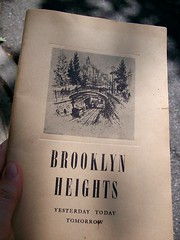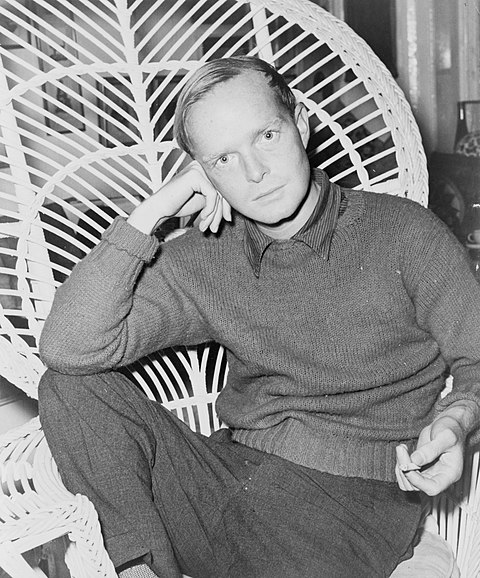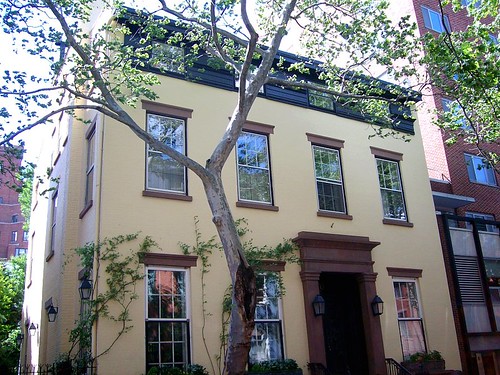Truman Capote and his House on the Heights
“I live in Brooklyn. By choice.”

And with that simple, but bold statement, Truman Capote started his essay, “A House on the Heights,” on his experience living in Brooklyn Heights at 70 Willow Street. I, too, live in Brooklyn by choice, falling into the less glamorous Greenwood Heights through the chance of craigslist, but still loving the calm of the borough after working in the frantic Manhattan. This past Saturday, my friend Patty, of the decorative arts blog Retrograde Design, organized a walking tour of Brooklyn Heights where we each selected a location to research. Our itinerary was based on a travel guide from the 1930s and cut through the center of the most elegant Brooklyn Heights streets, named for fruit and trees. You can take your own vintage tour of Brooklyn Heights, with its “sly alleys and tucked-away courts and streets that sometimes run straight but also dwindle and bend,” by following this Google Map that Patty created.

After thinking over the many writers who have lived on the leafy streets, like Auden, Whitman, and Wolfe, I decided on the distinctive Truman Capote. In the basement apartment of a pale yellow Greek revival townhouse, Capote wrote his two most famous books: Breakfast at Tiffany’s and In Cold Blood. His two rooms with yellow tiled floors, decorated with ceramic cats and stuffed snakes, were just a couple of the house’s 18 rooms. Built in 1939 with a wine cellar, spacious porch, and garden, it is more like a Southern estate than a Brooklyn brownstone. Having grown up in Louisiana, Capote probably felt at home during the years he lived there between 1955 and 1965. The house was then owned by stage designer Oliver Smith, whom Capote claimed he got drunk on martinis in order to convince him to let him live there. When Smith was out of town, Capote would often entertain his glamorous friends and claim he owned the whole house. Despite writing that greater Brooklyn was “an uninviting community…A veritable veldt of tawdriness,” he had found an oasis in Brooklyn Heights and the loveliness of the Esplanade with its view of “Manhattan’s tall dazzle” over the East River.

70 Willow Street is suddenly as talked about as when Capote lounged on its wisteria-canopied porch, since it went on the market this week for the first time in 70 years. If you have a small-town murder you would like to obsess over into a novel, you can purchase the home for $18 million dollars. That price, or even a few million less, makes it the most expensive townhouse ever sold in Brooklyn.
I plan to return to Brooklyn Heights to investigate other homes of authors who were inspired while living “atop a cliff that secures a sea-gull’s view of the Manhattan and Brooklyn Bridges.” There are more images and locations from this most recent exploration on my blog.



Follow us on Twitter to get the latest on the world's hidden wonders.
Like us on Facebook to get the latest on the world's hidden wonders.
Follow us on Twitter Like us on Facebook